About Karin
Karin Wells is an artist of amazing versatility. She graduated with honors from both the New England School of Art and Design, Boston, 1965, and the Butera School of Art, Boston, 1986. Karin has enjoyed a career as an award-winning graphic designer, illustrator and sign painter. She also taught Life Drawing and Painting for many years. She has most recently studied for three years at The New England School of Classical Painting in Greenfield, New Hampshire, under the direction of Numael Pulido.
To expand her craft, Karin has traveled throughout Europe studying the Old Masters. Her art reflects the deep influence of these great works. Karin demonstrates a remarkable facility for likeness and for the use of light.
The artist is a member of The American Society of Portrait Artists, Portrait Society of America, The Portrait Society of Atlanta, and The Copley Society of Boston.
To learn more about Karin and to view more of her amazing work, be sure to visit her website and blog by following the links below:
Website: http://www.karinwells.com/
Blog: http://karinwells.blogspot.com/
If you would like to be notified when Karin updates her blog, be sure to click the “Follow” link in the upper left hand corner of her blog.
Add Pure Color into Reflected Light
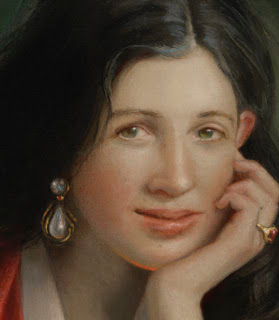
When I can, I like to “get away” with adding thick intense pure color into reflected light (under the nose and chin for example).
So often you can “hide” a bright pure color in plain sight – and nobody will notice it until you point it out.
In my Portrait of Zabie, above, I have added a brush stroke of pure cadmium orange – straight from the tube – underneath her chin.
I define “pure color” as a color without any addition of white to “dilute” it. Instead of adding white, I usually adjust the value (lightness or darkness) of this color with something lighter – usually yellow ochre pale in order to allow it to blend in with the surrounding tones. I am talking about thick paint here – not a glazed color.
I prefer to use the warm colors from my palette – reds, yellows and cadmium orange. But there is no reason not to use the cool colors if it serves the image.
Pure color can greatly enliven and enrich a painting. I try to find as many excuses to use pure color whenever and wherever I can.
Reflected light can be “toned down or neutralized” a bit by mixing two color opposites (i.e., red/green, purple/yellow) if necessary. If a cooler color is required, you can add a dab of white and/or blue to “cool” the mixture. Sorry, I do not have an example of this handy.
Note that if you’re not careful, you can lighten an area too much and run the risk of fragmenting a solid shadow – always a no no.
Although the accepted knowledge is that “reflected light” is actually reflected from a color specific object nearby, I seldom pay much attention to this.
I say that whatever color looks good and you can get away with..go for it! Painting is not meant to be reality. “Reality” is mostly the task of photography.
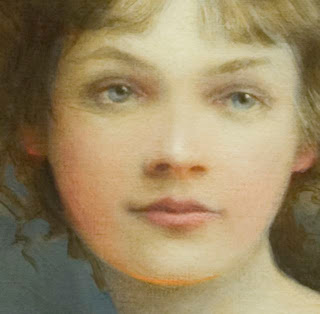
Detail of my Portrait of Elizabeth Brewer. I used a streak of nearly pure cadmium orange both under the chin and in the earlobe on the left.
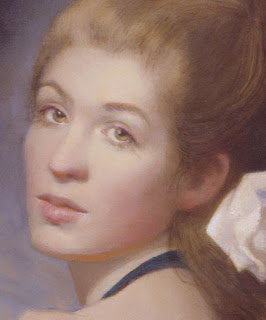
Detail of my Portrait of Whitney. I have added more yellow and a touch of blue here in order to tone it down.
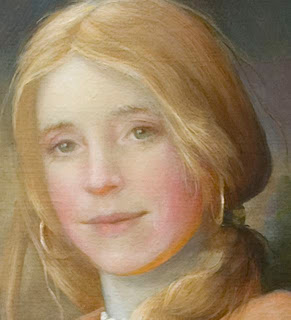
A detail of my Portrait of Gwyneth. I used a little more yellow to tone it down under the nose and chin to avoid overpowering those delicate skin tones. Toward the ear, I used straight-from-the-tube undiluted cadmium orange.
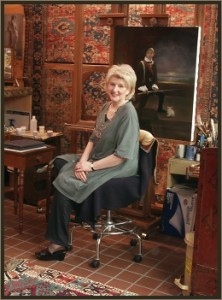
Karin, your work is wonderful, so talented.